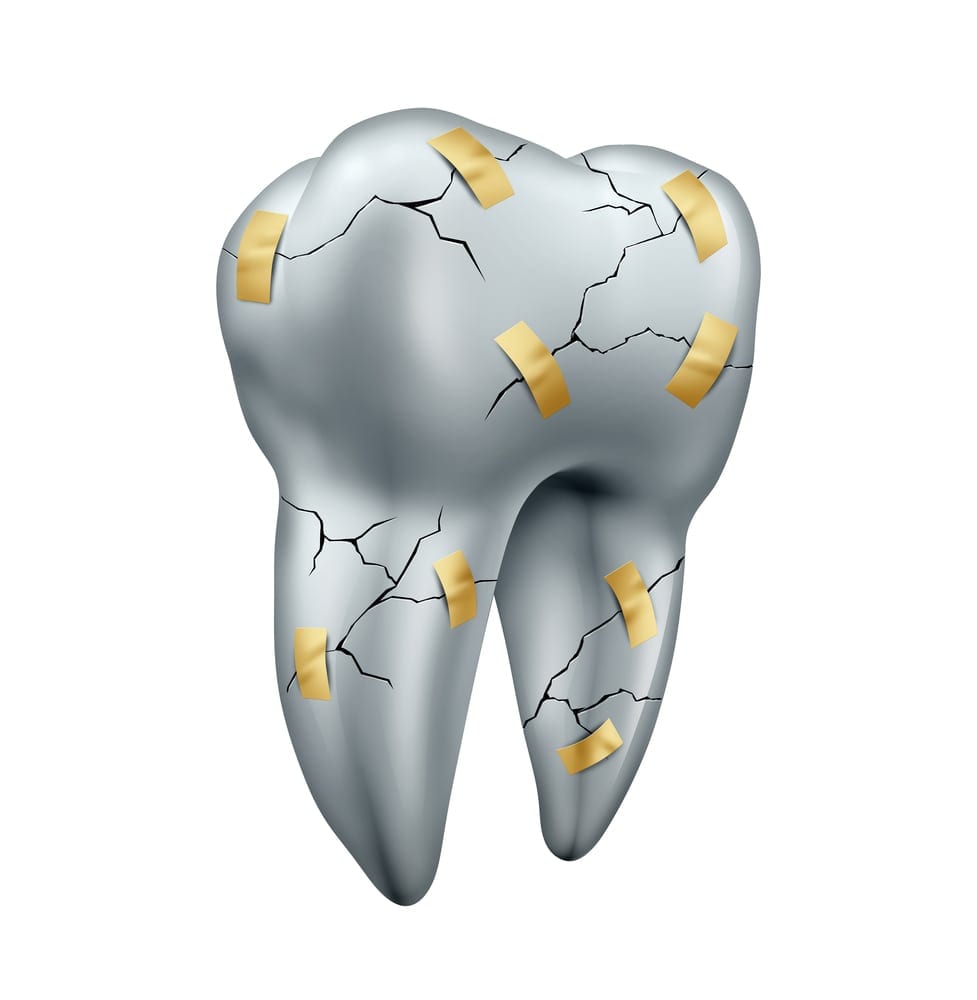Did you know that tooth enamel is the strongest substance in the human body? Despite its strength, tooth enamel is still not considered to be indestructible. In fact, enamel can be damaged just like any other part of the human body. When tooth enamel becomes damaged, it will either crack or chip. Things like bruxism, hard foods, nail biting, accidents, and using your teeth to hold or open things can all cause your enamel to become chipped or cracked.

No matter what the cause of the damage was, it is important to visit your local cosmetic dentist so that they can fix the broken tooth. Although you may think the damage looks minimal and does not require fixing, failing to repair a broken tooth can cause major problems down the road. This is because a tooth that is chipped or cracked is no longer structurally sound and is now prone to more damage. Not only that, but bacteria can enter the tooth through chips and cracks, which can cause a pulp infection that will require a root canal.
In order to prevent additional damage or a resulting pulp infection, dentists recommend having a broken tooth fixed as soon as possible. Luckily, there are a variety of ways your dentist can fix a broken tooth. The exact method used will likely depend on the location and severity of the damage, as well as personal preference and budget. Here are some of the ways your cosmetic dentist fixes broken teeth:
Cosmetic Bonding
Cosmetic bonding is the process of bonding tooth-colored composite resin to the tooth enamel in order to fill-in chips and cracks. This method works exceptionally well for minor chips and cracks, preserves the majority of the natural tooth structure, and is the least invasive of all the methods. However, it tends to only work well on minor damage and is not well-suited for more extensive damage.
Veneers
Veneers are thin porcelain shells that are fabricated outside the mouth and then cemented onto the front side of visible teeth. They are used to improve the appearance of one’s smile, but they can also be used to repair minor chips and cracks. However like composite bonding, they are not always the ideal choice for more extensive damage. They are also not an ideal choice for repairing molars. Veneers also require a thin layer of enamel be removed before they can placed.
Inlays and Onlays

Inlays and onlays are indirect fillings that are fabricated outside of the mouth and then bonded in place. They are commonly used to restore molars or premolars that have become chipped or cracked. An inlay is used to restore the chewing surface of the tooth, while an onlay is used to restore the chewing surface plus one or more of the tooth’s cusps. Both can be used to repair chips and cracks that are too severe for cosmetic bonding or veneers, but not severe enough for a dental crown.
Crowns
A dental crown is a tooth-shaped cap that is fabricated outside of the mouth and then cemented over a damaged tooth. Dental crowns are used when the damage is extensive, has affected a large amount of the natural tooth structure, or has reached the pulp layer. Depending on the condition of your tooth, its structure may need to be reduced or reshaped. In some cases, composite resin can also be used to add structure in some areas to support the crown.

Dr. Admar holds dual certificates — a Bachelor of Dental Surgery (BDS) in 2010 from India and a Doctor of Dental Surgery (DDS) in 2014 from Canada. He is now a full time practicing dentist in Kamloops where he provides a variety of services. Dr. Admar spends hundreds of hours in continued dental education to stay up to date in cosmetic and implant dentistry and he has achieved several advanced qualifications.


